The Mosquitos | Interview | “this then are the Mosquitos!”
Long Island, New York’s The Mosquitos were well known for their blistering live shows. They released a 5 song EP on the Valhalla label in 1985.
They took their name from the band that appeared on an episode of Gilligan’s Island. The band wrote ‘That Was Then, This is Now,’ which at the time regrouped The Monkees turned into a Top 20 hit in 1986. Kool Kat Musik recently released a double CD with 47-song (!) which allowed for the release of just about every original song The Mosquitos ever played, plus a handful of covers. They got a few friends to help get the job done, and got incredibly lucky when noted NYC musician Mike Fornatale agreed to clean, repair, massage and master the recordings. Tony Million$ (Farfisa, lead and backing vocals) envisioned the anthology as two long live sets: the first would cover from the band’s beginnings through the mid-period, while the second would represent the time of the EP’s release through to the end. The track list would not be chronological, instead arranged as it might work onstage. Since the band only recorded a third of their original songs in the studio, the rest are represented in a live setting. Much care was taken to find the best versions, and some you’ll swear are studio recordings. “When a band doesn’t “make it,” people think that maybe they didn’t have what it takes. This collection proves otherwise…and shows what a great songwriter Vance Brescia is, as well.” – Tony Million$
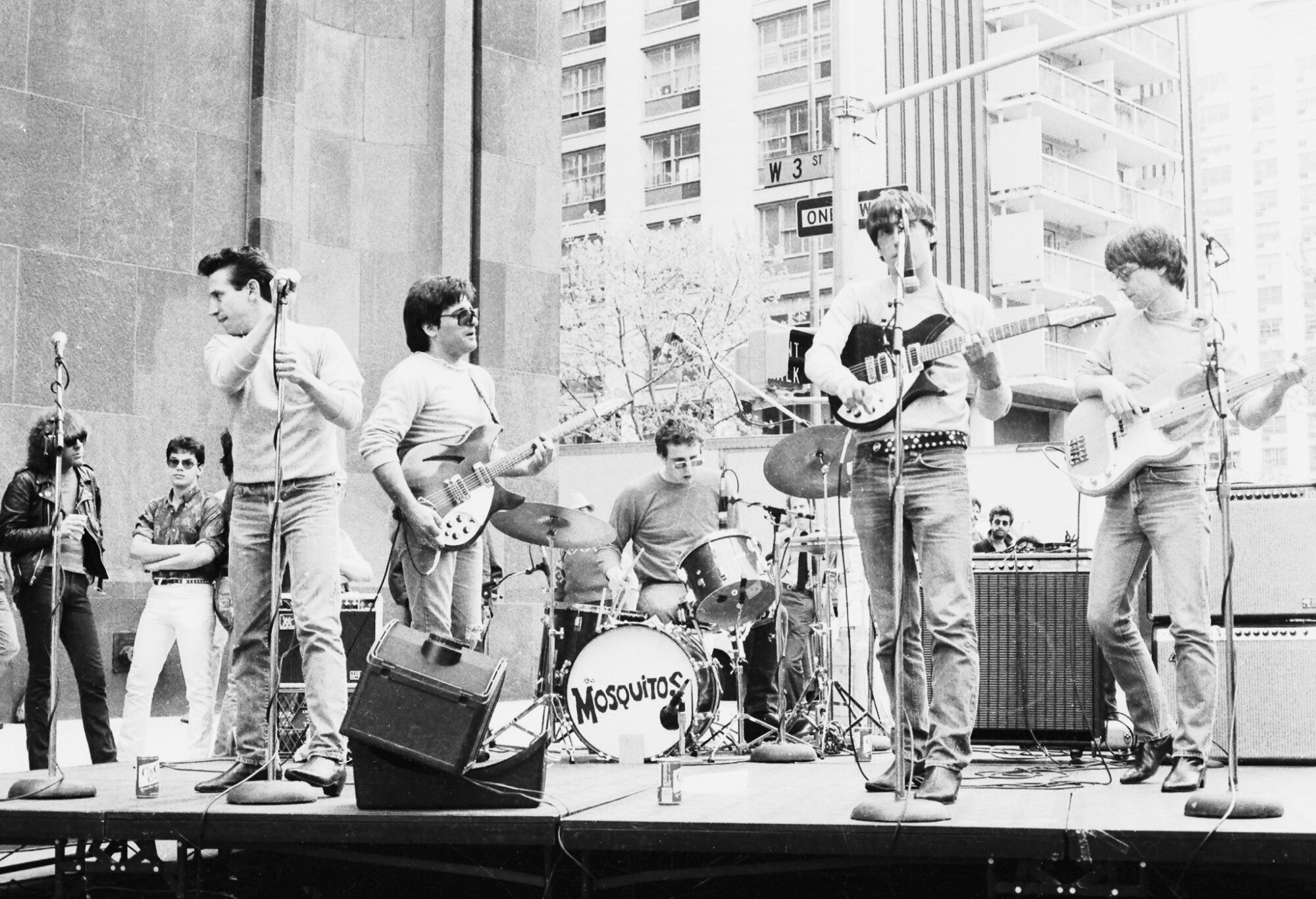
“The 2CD set is extremely comprehensive”
Where and when did you grow up? Was music a big part of your family life?
Tony LoGuercio: East Northport, NY. I believe I was the first in my family to attempt playing any kind of instrument. February 9th, 1964 – a familiar story – The Beatles first appearance on the Ed Sullivan show. I was six years old and knew exactly what I wanted to be if I grew up.
Steven Prisco: I was born in 1955 in Huntington, NY. While my family wasn’t musical per se, there always was music in the house. I had two older brothers who had albums and singles from the late fifties and early sixties. I became obsessed with the New York AM radio stations. I would listen to a transistor radio every night under the covers and keep lists of the weekly top ten in black and white notebooks. Then somewhere around 1964 they began to talk about The Beatles and I could sense they were very excited. However, talks about things like Beatle “wigs” confused me – I hadn’t seen them yet, so I asked my mother. She said “Oh! You’ll see on Sunday night.” On February 9, 1964, eight days before my ninth birthday, I realized what my future career would be. I was shaken to the core by that performance and had never realized that this was something you could do and my passion for listening to music became a desire to play music.
Iain Morrison: I grew up in Huntington, NY. In my family no one was musical.
Pat Bishow: I would say I really got into rock ‘n’ roll when I was in Jr. High. My older brother was obviously a big influence.
Mitch Towse: I was always into music. Started playing when I was nine. Was in all the top bands in junior high and high school.
Vance Brescia: I was born in Manhattan, but grew up in Northport, NY in the 1960s – 1980s. My mom dabbled in show tunes – did musicals under the name Babbett Dupre. I think that was when she was in high school. My dad was an opera singer and historian. I’m sure an influence from the music I heard at home crept in. I wouldn’t want to neutralize that influence. It’s probably one reason why my taste in music is so eclectic.
When did you begin playing music? What was your first instrument? Who were your major influences?
Tony: I was eight years old and took my first guitar lesson at Monroe Music in East Northport – It’s still there. The original owner’s name was – John Fogerty! Before my first lesson a woman handed me an acoustic guitar – “Right Handed”. When she turned around, I flipped the guitar to “Left Handed” since I was a Paul McCartney fan. When the teacher turned back around and saw that I had flipped the guitar to left-handed, she said, “Sorry, but we don’t teach Left Handers here”. I flipped the guitar back to Right Handed and said, “Oh well, I guess I’ll have to settle for Lennon”.
Steve: When I turned fourteen, a relocated musician from Nashville moved in across the street and hung up a shingle advertising guitar lessons. I begged and pleaded and soon began taking lessons. I went to a local music store where I bought a “Young Rascals” songbook and pored over every page. Their guitarist, the great Gene Cornish, listed Scottie Moore as his favorite guitar player. When I had my first guitar lesson, the teacher asked who my favorite guitarist was and I immediately responded “Scottie Moore!” He was a bit taken aback, but all of my lessons then revolved around Elvis Presley songs! This was in 1969, and though I knew who Elvis Presley was, I really was not into him. I was much more influenced by the British blues guitarists – Eric Clapton, Jeff Beck, Peter Green. Other huge influences were Pete Townshend and Dave Davies. It wasn’t much after that when I met Iain Morrison, introduced by a neighbor. Iain had just moved to the states from Scotland and he, too, had a love for music, along with the biggest record collection I had ever seen – and they were all imports! We became fast friends.
Iain: I started playing bass in 1978. A friend wanted to start a band as the lead singer. I joined on bass as I knew that Paul Simonon of The Clash had been playing for six months when they recorded their first album. I figured if he could do it I could do it. That band became The Fabians.
Pat: When I was a kid, 50s music had a comeback (American Graffiti and Happy Days were big), so I really got into Chuck Berry, Little Richard and Buddy Holly. I started on guitar in junior high and for some reason I loved country rock. (New Riders of the Purple Sage comes to mind). But in high school I discovered punk (Ramones, Richard Hell, Clash, et cetera) and that took over for me. Also, I switched to drums at that point.
Mitch: Ringo Starr was an early influence as was Ginger Baker. No one taught that stuff. You had to buy the records and teach yourself. In the 60’s, they thought rock wasn’t legit
Vance: Singing came before playing. I don’t ever remember not singing, or being interested in music. When I was a kid, I walked around singing ‘Holly Jolly Christmas’ even when it wasn’t Christmas! I learned piano first, but I only had five lessons. After that I just noodled around on the piano for fun and learned to play by ear. The first song I remember picking out was ‘Tired of Waiting’ by The Kinks. The guitar came after that. It’s an old thrift store story. I picked up my own guitar probably when I was about eleven. My mom got me a little $15 acoustic guitar which I still have. It was a no name student size, small body guitar. The plainest acoustic guitar you could imagine. I go way back when it comes to music – back to Lawrence Welk, John Raitt, Anthony Newley, Joan Baez and even some artists most of today’s musicians don’t even recognize, like Paul Robeson. When I started out playing music with bands, I didn’t get into it for the perks. I didn’t get into it for girls. I didn’t get into it to own a fancy car. I got into it to imitate The Beatles and Elvis Presley, that’s why – because I wanted to be like them. Other artists who influenced me and I enjoyed seeing live are Tom Jones and the Ramones in their early years.
What bands were you a member of prior to the formation of The Mosquitos?
Tony: In high school, I was in the jazz band – if that counts. Junior Year – Frost. Senior year – Getz Ice Shelf. 1979-1981 – Quisp (with two other eventual members of the Mosquitos).
Steve: I only had one objective in life – to get into a band – and eventually found some like-minded school mates: a guitarist, Ken Lawson and his younger cousin, Larry Lachmann, a bassist. A friend I had known from grade school, Ward Henry, played drums. My parents graciously let us practice in our basement. Iain eventually became the lead singer in what was to become my first “real” band. We called ourselves “Halfnelson” until Kenny showed up at rehearsal with a record by a band with that name. We changed our name to “Gun Hill Road” after a road sign we would see when driving to the Capitol Theater in Port Chester to see concerts. The band that released that album changed their name as well, re-releasing the record as Sparks (I still have that LP!). We played a lot of blues that we picked up from the British blues bands that we all loved at the time. We played a few local gigs but eventually went our separate ways as the end of high school approached. While some of our friends went off to college, Iain went to Hofstra and we remained friends. We went to a lot of concerts. A lot of concerts. We toyed with the idea of forming a “British Invasion” band, but after auditioning a few people dropped the idea. Years went by and it seemed that my performing days were over. Then one of our friends – I can’t remember which one – came up with the idea of forming a punk rock band. Since I had played guitar, I was to be the guitarist. Another friend, Jon Arm, who had some marching band experience was selected to be the drummer. It was decided that Iain would learn to play bass. A friend that Jon had met in college, Eamonn Bowles, was to be our lead singer. And that’s pretty much how The Fabians came into being. Eamonn turned out to be a top-notch performer and songwriter and we soon found ourselves on various NYC stages – CBGBs, Max’s Kansas City, The Peppermint Lounge to name a few. There were a few changes along the way, with Roger Murdoch replacing Jon on drums. A demo was recorded. Eventually we called it a day. Eamonn went on to form The Transformers and The Martinets, with whom he still appears with to this day. The Fabians have occasionally reformed over the years for a one-off gig.
Iain: The Fabians.
Pat: I had been in a couple of really bad country rock bands (playing guitar and harmonica) then I switched to drums and did typical cover bands. I met Vance in high school. We bonded on the idea that we both loved the Ramones. I remembered he called me up one day and played a tape of his music (over the phone) and asked if I wanted to play drums for him. I thought the songs sounded good, so I said, “Yeah!” And Quisp was born.
Mitch: The Stedies, Kenny Holly (rockabilly), among others. Mostly rock bands.
Was the scene like in Long Island back when you began? Did the local music scene influence you or inspire you to play music?
Tony: Non-existent for original bands. Slowly – probably due to the fact that everyone thought our originals were prior hits, we played original music on the Island and a club called Sparks in Huntington promoted it. It became our home base.
Steve: We were lucky. For some reason the local Huntington music scene was thriving. There were a lot of clubs to play and they were receptive to all kinds of music. Now, don’t get me wrong – the bar scene is always bad when it comes to the club owners, the quality of the stage (if there is a stage!) and the ability to get paid. Some places were better than others, but this is the way it has always been and pretty much still is.
Iain: Long Island was long known as the home of cover and tribute bands. Mainly cover bands playing covers of mainstream bands such as the Doors or the Allman Brothers or Pink Floyd, so the local scene did not inspire me to play music.
Pat: It was fun! Dave Larue had started his Chelsea shows (named after the bar); he would have many bands play (the sets were 5-7 songs). Huntington, LI started to have a real scene with people doing original music.
Mitch: [The scene on Long Island was] always good, but mostly cover bands.
Can you elaborate on the formation of The Mosquitos?
Tony: Wow this is a long story. The short version: Tony, Vance and Pat were in a band called Quisp; Iain and Steve were in a band called The Fabians. Quisp broke up Summer ’81 when our other guitarist said he couldn’t make our first gig because “gotta fight somebody, bro.” The Fabians must have split up around the same time. I quit and told Vance not to call me for a while. I needed a break from 3-4 rehearsals a week. Vance called me a week later and asked me if I wanted to be in a new band. I said NO – It’s too soon! He was putting a band together to play a gig set up by the owner of One Way Records in Huntington, Dave Laru. After a few days, I realized that since they didn’t have many songs and really weren’t exactly experienced singers that I offered to join to help out and sing a few songs at the end of the show. That was it. We never expected it to last more than a gig. However, the place was PACKED! We did another and they had to turn people away. We decided we had a good thing.
Steve: With The Fabians behind me, I wasn’t sure what my next musical move would be. Then one day Iain, who was working at a Sam Goody’s record store told me about some kid who was showing up at the store every day, talking incessantly about beat music and how he wrote songs and wanted us to be in his band. That 17 year old was Vance Brescia. I was now 27 and still pretty much wandering aimlessly through life. We decided to give it a try. We showed up at Vance’s memorabilia-filled room, every square inch covered in some homage to early sixties performers. We were introduced to Pat Bishow – who was to be our drummer – and Tony Millions, whose role in the band was yet-undetermined. One thing was super-obvious right from the start. Vance was a talented songwriter and a fantastic singer and he was laser focused on making music. We learned a few of his songs, as well as some covers that he had suggested and while a bit rough around the edges, it felt like there was something there. Tony eventually stepped up to the microphone and he turned out to be a fantastic singer, as well! Along with Iain, we had three singers who could have easily been the lead singer in any other band. We began to rehearse weekly and not too long later were asked to take part in an evening of music put together by Dave Larue who owned a record store in Huntington that was a hangout spot for area musicians. The show took place at a bar in Huntington and Vance, who was only 17 as the song goes, had a lot of friends who all came down to see his new band. I’m still not sure how they were able to be in that bar, but from day one The Mosquitos – which we decided to call ourselves after a band that appeared on an episode of “Gilligan’s Island” – had a built-in fan base that were as much a part of the band as the band members ourselves. I had never experienced a rush like this before. Soon afterwards Tony became a full-time member and eventually added organ to the mix. Things for the Mosquitos just took off. We became a part of the New York garage-band scene, while establishing a home base at a club, Sparks, in Huntington. Our fan base grew and grew. Our shows were frantic-paced affairs. In the beginning we wore somewhat matching outfits making us look like a tight-knit gang. Vance was writing songs at a break-neck speed. We practiced relentlessly and took every gig we could. Eventually we felt the need to replace Pat on drums. It was an admirable departure and he was replaced by Mitch Towse who we knew from the Huntington music scene. Mitch brought a new energy to the band and gave Vance the chance to expand his songwriting style.
Iain: Vance Brescia used to come into the record store where I was working and he was interested in the Fabians and the dynamics of being in a band. A year or two later he asked me to play bass in a band he was putting together. We formed to play a single gig at a bar that had an open mic night once a month. It went well and we stayed together.
Pat: Quisp had broken up because we wouldn’t play live. Vance called me and asked me to play with some new guys (Steve and Iain). He promised we’d do a gig (the Dave Larue show). I remember saying “you promise?” and he said “YES!’-so I was in. I really wanted to play live. When we got together, I was extremely nervous. These guys were real musicians! So I practiced a lot to make sure I knew the songs. When we played together, I thought we sounded good. We all did. I would argue that in 1st practice everyone could feel something good was happening. Vance and I were less experienced so we would often get together before and after them to go over stuff. We really wanted to stay on game.
Vance: A couple of us had been in my other band, Quisp, and several guys had been in the Fabians. I quit my summer job at an auto body shop to start the band. I knew I would have to dedicate myself full-time for it to be a success. I was a 60s pop culture fan. The Mosquitoes were a rock band who ended up stranded on the island in an episode of Gilligan’s Island. They did a parody of the Beatles and I figured why not? The Mosquitos it was!
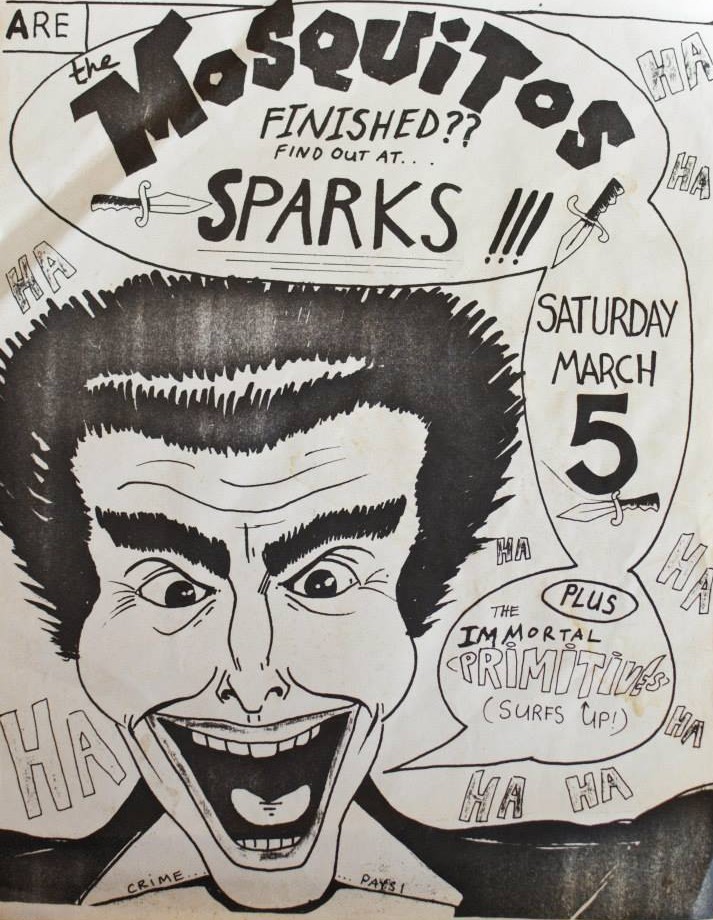
“We even opened for the Ramones at Southampton College in 1983”
What did your repertoire consist of early on?
Tony: Lots of obscure Mersey Beat and first wave British invasion songs until we had enough originals to carry a set.
Steve: Vance was pumping out songs left and right, so while we did a fair amount of covers – mostly all songs by British Invasion era bands, our sets were mainly his originals. A couple of my songs from The Fabians were part of our early shows.
Iain: A few originals, but mainly obscure Merseybeat and other British 60’s covers.
Pat: In Quisp, 95% were original. When we started the Mosquitos, due to time constraints, it was 50/50 (because we had to learn songs fast). Mostly covers of songs we loved from the early 60s. I remember Tom Ciorciari noticed any covers we did were covers the Beatles did (Money, Slow Down, et cetera). I thought that was kind of funny.
Mitch: [When I joined in 1984], we were still doing some of the older stuff, but [the group was] starting to branch out.
Vance: We all liked sixties music and did some covers, but mostly original tunes that I wrote. We got our start at Chelsea’s where we did the Sunday shows sponsored by One Way Records owner, Dave Larue. We worked hard rehearsing at least four times a week. One night we would work only on vocals. The practice paid off. We were popular in Long Island and NYC … even opened for the Ramones at Southampton College in 1983.
Did the local music scene influence you or inspire you to play music?
Vance: I was always busy with something. To wind down from The Mosquitos I would hang at local places with friends, or sometimes it would just be me and my guitar. I remember doing lunch time shows at a gourmet deli in Syosset. We frequented DeSans and Gunther’s of Jack Kerouac fame. One time Tony, Pete and I did ‘I Am the Walrus’ and the audience loved it. After that Beatles’ tune we became known as The Eggmen. I met this guy named Dee Harris in those early days. He was a kind of a renaissance man – one of those ageless characters who was always around. He supported me with advice. I listened to his suggestions and then harnessed the attributes he encouraged.
You were very young when you formed in 1981…
Tony: Not terribly. I was 25, I believe Steve and Iain were 2 years older and Pat was maybe a year older than Vance, who was 15-16 at the time.
Steve: Well, I wasn’t. Vance was 17 and I am ten years older than him so I was 27 when we started.
Iain: No. I was 28.
Pat: 19! And like I said before, Steve and Iain were really accomplished players. Tony had been the experienced one in Quisp. But he was like a teacher. He was very patient and helpful to us with arrangements and dynamics.
Vance: Yes. 16 or 17 years old.
What would be the craziest gig you ever did?
Tony: 1. Opening for the Ramones on March 12th,1983 at Southampton college to over 2,000 people.
2. We played a fan’s wedding reception in a NYC loft and all they asked us to play was our 5-song EP.
3. We played an early gig at our home base on Long Island, Sparks, and then drove to NYC to close a show called “Fuzz Fest 84” which I believe was recorded.
Steve: I assume you are asking about the Mosquitos. We did a gig that took place in a department store in Washington, DC, where we were hired to play only Beatle songs. That was odd.
Iain: A department store in Washington D.C was having a “British Week” to promote British products and fashions they were selling. The opening night of the event they were having a cocktail party and formal dinner and they wanted a band to play Beatle songs. We agreed to do it anonymously. We played to a large group of people wearing tuxedos and evening gowns. We got paid a lot of money for it which we used towards paying for our EP.
Pat: Gosh so many. One of the funniest was when NYU blocked off the street to let us play. One of the weirdest was when we played at some rich kid’s Sweet 16 party. (They also hired the break-dancers from Flashdance!!). We played at a biker bar. (That was actually okay). So many…
Mitch: Playing with Kenny Holly for the New York Fire Department at Lido Beach. They wanted a Top 40 band. We played Rockabilly. They were gonna kill us.
Vance: Too many to pick just one, but playing a gig at our home base – Sparks in Huntington, Long Island, then packing up and rushing to the city for the Fuzzfest in the Ford Fairmont wagon was quite an experience.
Note from Blair (one of the co-producers of the CD): The Fuzzfest – held June 30, 1984 – featured The Cheepskates, The Outta Place, The Tryfles, The Fuzztones, The Vipers and The Mosquitos. It was at a club called 240 West, located at 240 West 52nd Street in Manhattan. I was at both gigs that night, making the same trip – albeit in my friend Tony’s fluorescent yellow Volkswagen Beetle. We didn’t have gear to pack, so we got there ahead of The Mosquitos and saw some of the set before them, as well.
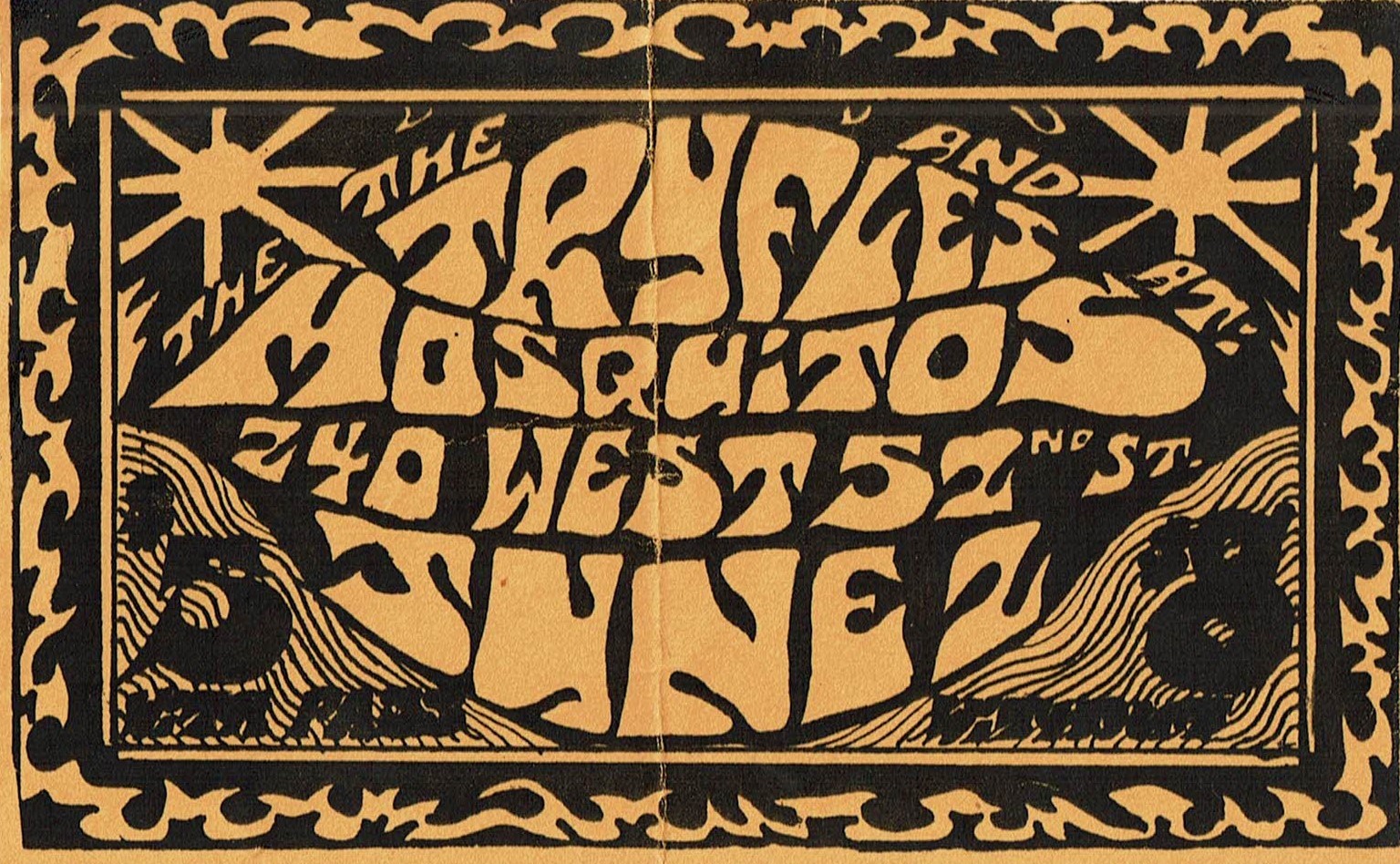
You played with bands like The Vipers and The Fuzztones at the Ritz, Peppermint Lounge, Danceteria and Irving Plaza…even opening for The Ramones. What was that like?
Tony: Very simple – FUN! BTW – The Smithereens opened for us at every gig we did with them. This is NOT a bold statement, even coming from a band member, but we were the BAND MOSTLY LIKELY TO GET SIGNED.
Steve: It was great! The NYC clubs had much nicer stages and sound systems and most of the bands we played with were good people. We would get a bit of shade from the garage scene “extremists” who insisted that you use period correct gear – and I was using a digital delay. I found it funny, as the players they worshiped were always looking for new technology and the latest sounds. I was never into that aspect of the scene.
Iain: It was incredible fun. Those were amazing years. Playing in a band with no real responsibilities. Don’t pay any attention to rock musicians who complain about how hard their life is. They’ve got it dead easy!
Pat: When the “scene” was happening, it was a lot of fun. We started playing every weekend with some weekdays thrown in. We made some good friends playing with so many bands at the time. Obviously, opening for the Ramones was the high point!
Mitch: I love The Fuzztones. The best of the true garage bands. I also love The Fleshtones. Still rocking and writing great songs.
Vance: The Vipers and Fuzztones were very kind to us and it was always great playing with them to see what songs they had. Opening for The Ramones was thrilling as they were idols of mine.
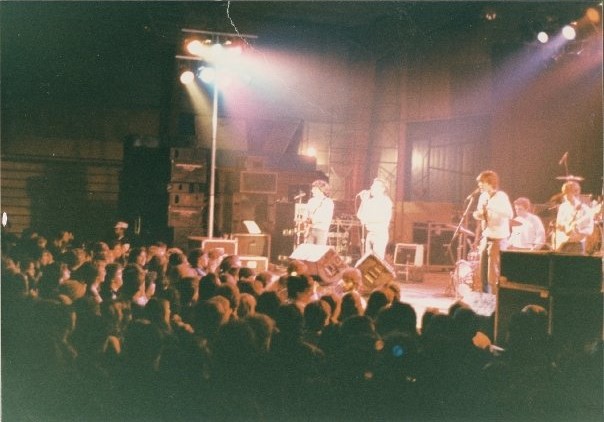
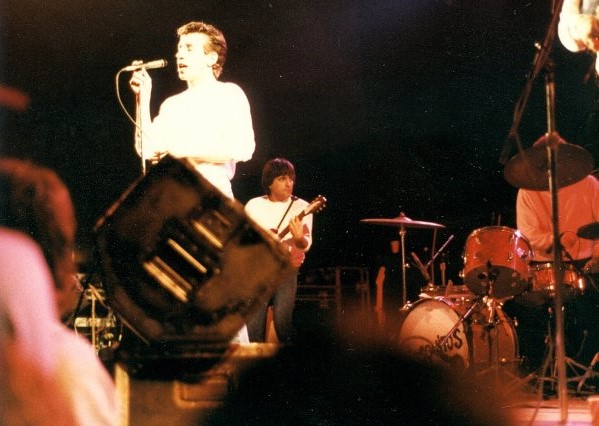
Kool Kat Musik recently issued a fantastic compilation; would you like to tell what all we can find on it?
Tony: Here’s a link to order the CD. And here’s one to the Bandcamp page: The Mosquitos – ‘this then are The Mosquitos!,’ by The Mosquitos
Steve: It pretty much covers all of the originals we performed – at least the ones that we were able to dig up on live recordings. Plus, it includes some different versions of the songs from the EP, as well as some later tunes that we did during a demo session.
Iain: It’s a collection that spans the years that we were active. It includes original and covers from studio and live performances. We had to keep the number of covers to a minimum because of copyright and royalty issues.
Vance: The results of lots of hard work by those who put it together.
Note from Blair: The 2CD set is extremely comprehensive. It includes almost every original song the band ever performed, whether it was recorded in the studio or only done live. It also includes 5 cover songs. All in all, you end up with over 2 hours of fantastic rock ‘n’ roll, killer melodies, and amazing harmonies. In short, there’s a very good reason why my fellow fan – and, along with me, a co-producer on this project – Bill Jones and I were willing to work on this for three years. Put simply, we’d been devoted fans since we each saw the band as teens in the early-mid 80s…and had been listening to live recordings and such ever since. It was high time a project like this came to be. We are extremely thankful to Kool Kat Musik for allowing us to create such a complete collection.
How did you approach songwriting? You always had beautiful arrangements and harmonies.
Tony: That’s a little tricky. In the beginning, Vance usually had the whole arrangement fleshed out, so he would ask us to play what he heard in his head. As time went on, we were contributing more and more. For example: Our lead guitarist, Steve Prisco, came up with the tasty riff that makes ‘Situation’ such a great track, in my opinion.
Steve: Vance was the primary songwriter and he usually had a concrete idea of the backing vocals, though he was open to suggestions. As far as the instrumental backing, he did put his faith in us to deliver the right sound.
Vance: It wasn’t as if I just woke up one day and wrote a song. I had been on the road since I was sixteen, seventeen working hard, playing five or six nights a week when nobody else was playing originals. It was all cover bands where I was – and basically starving. So, we put in our time sleeping seven guys in one hotel room. Any young bands would know the drill about that.
Note from Blair: Although very little of The Mosquitos’ originals were by anyone but Vance, Tony had actually sold songs he’d written before he ever met Vance. In addition, he wrote both with and apart from Vance during their days together in Quisp. In the band he had in the 90s – The Fabulous Custodians, he wrote quite a bit. And in the past 5 years, he and I have co-written about 35-40 songs for our band, Pandora Spocks.
Note 2: Iain actually did have an answer here, but there’s no reason to include it unless you want to. He said, “You’d have to ask Vance, Tony or Steve about that one.” (In fact, Iain does have a co-writing credit on the CD, as Tony says Iain contributed a couplet to one song, but Iain doesn’t recall it at this point.)
I believe you recorded several demo tapes around 1983, before heading to the studio to record “That Was Then, This Is Now!” on the Valhalla label.
Tony: Here are the three other recording sessions we had. (Note: Those who buy the 2CD set, ‘this then are The Mosquitos’ can find all this information on the back cover.)
1. 1982 – Back Door Studios, Huntington NY. Songs: ‘Quit It,’ ‘Don’t Know Why’ and ‘Darn Well’
2. 1983 – Michael Bona Studios. Song: ‘You Don’t Give a Hang (About Me)’
3. 1984 – Granet Studios – Babylon, NY. Songs: ‘Put Your Foot Down,’ ‘I’m So Ashamed,’ ‘I Apologize,’ ‘I Know A Secret,’ ‘Face Up To It,’ ‘It Ain’t Necessarily So’.
Note from Blair: Vance’s assistant suggested you go to this link on Vance’s website for his answer, in a story written by their old manager, Scott Savitt: “Remembering Then”.
Steve: That’s true. We did a session early on where we recorded a couple of tunes – ‘Quit It’ and ‘Don’t Know Why’ and then another a bit later where we recorded ‘You Don’t Give a Hang’. Those were “released” as a cassette that I think we sold at shows.
Iain: We did several tapes. We used some of them to send to clubs to get gigs. Eventually we recorded songs with the idea of making a record, but those sessions never really worked out.
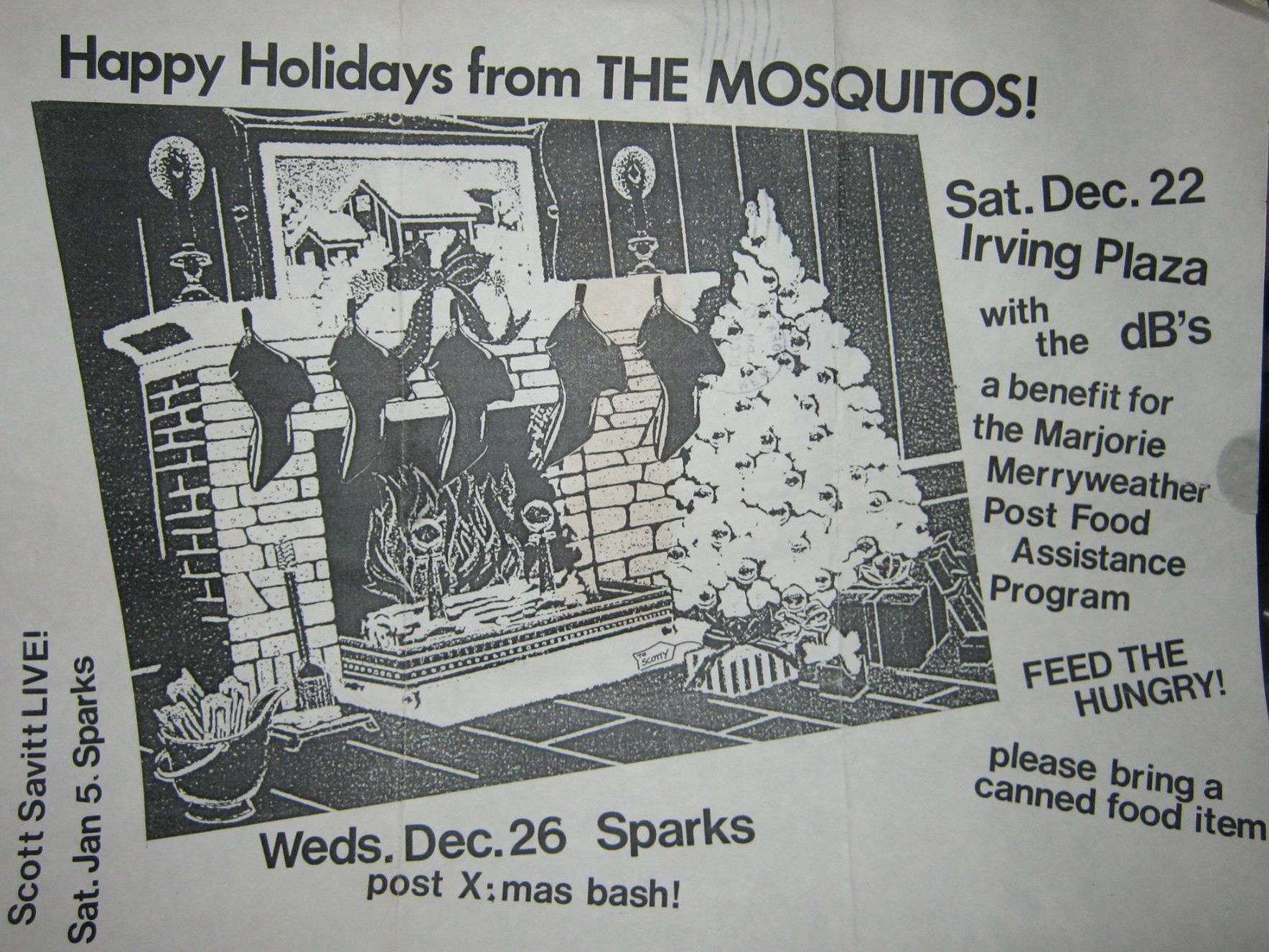
How was ‘That Was Then, This Is Now!’ received back in 1985. Did you receive any airplay?
Tony: Very well, as evidenced by Arista Records taking ‘That Was Then’ and using it for the Monkees’ comeback single in 1986. We sent it everywhere and then toured south, north, and further north to Canada. We got a lot of college airplay as well as doing a local Homegrown session on Long Island’s own [major FM rock station] WBAB.
Steve: Most of our fans felt it did not represent our sound on stage. It was the eighties and we fell prey to some of the technologies and recording styles of the day. We did get airplay, mostly on college radio. I found out years later that my wife played it on her college station in Oneonta, NY. We did a gig in NYC on St. Patrick’s Day that was put on by WNEW-FM and in advance of the show they played a few songs and it was a thrill to catch them on what was the biggest FM rock station at the time. I don’t think they ever played us again!
Iain: The response was positive for the most part. I think a lot of people, especially those in the garage scene were a bit surprised at how polished and clean it was. All of the rough edges had been smoothed out. It did receive a fair amount of airplay on college radio stations and local Long Island stations.
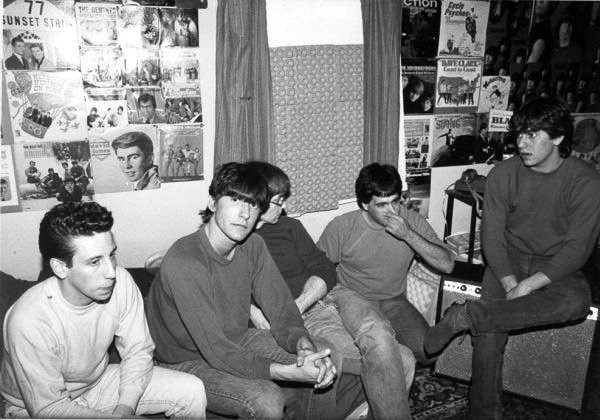
In 1987 you sadly decided to stop. What occupied your life later on and what currently occupies your life?
Tony: Work, work and more work. Still a HUGE fan of music and right now I am currently in a band called Pandora Spocks. We are working on an LP.
Mitch: More bands. I did one with my brother called Unknown Celebrities and we put out a CD together. I still play.
Steve: Without going into all the details, The Mosquitos continued to pick up steam. We played almost all of the popular clubs in NYC, with Irving Plaza becoming our home-base there. Scott Savitt, yet another local musician, had become our manager. We recorded a few times, culminating in an EP that while professionally done did not really represent the spirit of the band. We ventured out on tour, playing the college circuit and once toured with The Romantics. The Monkees recorded one of our songs, ‘That Was Then, This Is Now’ and took it to the Top 20. We were nominated and won “Best New Band” in the New York Music Awards. It did seem that the next step was inevitable and it was only a matter of time before we leveled up. But it never happened and that’s a story for another time. After The Mosquitos split and Vance decided to move on, the rest of us tried to carry on. We worked on some new material and salvaged some of the old, but before we did a gig, I told the band that I had to drop out. I was 33 years old and needed to get my feet back on the ground. I wasn’t ready to totally give up playing music, though, and re-joined The New Bohemians who had become a full-fledged ska band with a front-line horn section. One day we received an offer from Columbia Records to buy out our name as they had another New Bohemians who were about to release a record. We took the offer and changed our name to The Scofflaws. I was in and out of The Scofflaws and eventually they became one of the leading third-wave ska bands, releasing a number of successful albums and they still perform to this day. I had always been a fan of early rockabilly and due to the success of The Stray Cats there was an emerging scene on Long Island. I put together The Purple Gang with Mike Bifulco on guitar, Sean O’Neil on bass and Bill Grillo on drums. It was the first time I had ever fronted a band and it helped me to build up my vocal chops as I was the main singer. It was a fun project and we concentrated on more obscure rockabilly tunes. For a while we joined forces with an a cappella group, The Cartels, who added Jordanaires-style harmonies to the band. We had a few changes with Kevin Curry coming in on bass and Memphis Mike Lafata taking over drums from Bill. I always enjoyed bringing up guest singers and soon other musicians started showing up at our shows to take part. One January I decided it would be fun to celebrate Elvis Presley’s birthday by doing a night of his music and having a different singer come up for each song. The evening was a big hit as all the performers brought along their friends and fans and we packed the place. The following year I decided to do it again and invited even more singers. We made it a charity event and I continued to do “The Elvis Show” for the next 25 or so years, eventually selling out a 600 seat theater in Huntington three years in a row. The Purple Gang eventually ran out of steam, even while the Elvis shows went on. Then one day I got a call from Mike Drance, who I had met as a member of The Scofflaws. Mike was getting disillusioned with that band and being an excellent singer, wanted to start up something of his own. He still wanted to do Jamaican music, but instead of the horn-based bands that were so prevalent, he wanted to put forth a more soulful vocal sound based on classic rocksteady. I was a huge fan of the music, starting when I first saw the movie “The Harder They Come.” I was in and we gathered together Bill Grillo on drums, along with Mike Bifulco and then added a couple of ex Scofflaws in Victor Rice on bass and Jennifer South on keyboards and vocals. Victor was already much in demand and was soon replaced by Russ Sisto whose band ART was a contemporary of The Mosquitos and who Vance, Tony and I would join on stage to add backing vocals. Mike was also a songwriter and it wasn’t long before we recorded our first album. It featured some classic Jamaican covers and two of my songs as well. The Bluebeats began to get noticed and found ourselves appreciated by some of the Jamaican artists we loved and were influenced by. We opened for the likes of Toots and the Maytals, The Skatalites, Ken Booth and Culture. We released a second album and did a tour of Europe with rocksteady legends Alton Ellis and Dave Barker. We were honored when the legendary Roland Alphonso from The Skatalites sat in with us at a gig at The Cooler in NYC. It was 2000 and I had been employed by Sam Ash as Marketing Director since 1989. While my boss graciously allowed me to take the time off for the European tour, it was clear that I needed to concentrate on my “day gig.” I was also about to get married and I decided that I finally needed to take a break from playing out live. I loved being on stage and playing, but basically did not love everything else about it. So I left the Bluebeats who recorded their third album and continued to play. Eventually I rejoined the band for the occasional gig and it’s always a great time. After leaving the Bluebeats, I was unsure if I would ever be in a band again. Then sometime around 2004 I got a call from a friend. She was playing in a band whose guitarist had left and my name came up as a possible replacement. Plus, they were basically down the street from where I lived. I decided to give it a try. That’s when I met Tom Ryan who played drums and Rich Umbach who played guitar. Tom and Rich had known each other from high school and both were excellent musicians and I enjoyed working with them. We called ourselves The Blaggards. We ended up going through a bunch of bass players and since we were all “gainfully employed” we did things on our terms. We played songs that we liked, including a few originals. We really didn’t care about making any money, just making good music and having a good time. Oddly enough, we were able to do that for quite a while! But eventually the bar scene wore us down. We were getting a bit older as were most of our friends and it was hard to get them to come out to a ratty bar at 10PM on a Friday night anymore. We had a gig at a local honky-tonk, Matty Ts, where I had hosted some Elvis Shows. Just to mix things up I suggested that we jettison our usual set and instead play Rockpile’s ‘Seconds Of Pleasure’ album in its entirety – including the bonus 45 of Everly Brothers cover that came with it. Plus, we brought up a few guests, Elvis Show style. It was a lot of fun and put an idea in my head. Working with another group, The Hornets, that we formed a bond with, along with a super-talented local musician, Russ Seeger, I proposed that we try to create a scene of our own. First, we find a place that we could put on a show with an earlier starting time. Second, we come up with a theme for each show. The original concept was that each band would do a set, then come together for the theme. Finally, we would use the concept of having a different singer for each song of the theme. We decided to call ourselves The New York Roots Music Association and Saturday Night Social Club – or NYRMA for short. We kicked things off by presenting The Kinks ‘Muswell Hillbillies’ album. We brought in a horn section as needed. I bought a banjo. We landed at an American Legion Hall where Tom’s dad was a member – and where he was married once! It went great and was well received. The only issue was it was too long. We decided to expand on the theme and eliminate the band performances. Also, we thought we could do this once a month, but that turned out to be too much to attempt. Eventually we worked it all out and as we did, our group expanded to dozens of musicians and singers. We did shows that featured John Lennon, Hank Williams, Neil Young and others. We moved on to do shows based on classic albums, like ‘The Last Waltz’ and ‘Mad Dogs & Englishmen’ and themes like ‘The Summer of Love’. We have battles of the bands where we had two bands on stage at once, going song for song. We ended up moving to a small theater and consistently sold out. We continued this for 10 years, only ending when Covid came down. We eventually started up again, doing smaller focused shows and are now planning our first full-fledged show for late 2023. I spend most of my time helping to curate the shows, picking the musicians and singers and stepping in on guitar or vocals when needed.
Iain: I worked at a photo agency for a number of years and then spent the last 10 years working as a photo editor for a children’s educational publisher. Now I’m retired and, ironically, I play in a cover band here in Westchester, north of New York City.
Vance: We were very close to a record deal several times with my material and the one criticism back then was that it was too many different styles. I even said to the powers that be, why don’t you pick one style off the reel that you like (back then it was a reel) and I’ll write ten songs like that, if that’s what you think it takes. It was a very telling thing, considering back in 1966 that you could have three or four different styles on one record, and now they wanted just one. It seemed very strange and when I saw that I realized that I probably was no longer relevant in the traditional record deal sense of the word – and then I just said it’s just time to move on, which is why I made my money as a live entertainer. After the Mosquitos my focus was songwriting. I wrote a few songs for other artists and some were used in movies. I also performed as a solo artist, with bands in New York City and Long Island clubs and artists including The Monkees, Micky Dolenz and David Cassidy. Since 2001 I have toured and been Music Director for Herman’s Hermits Starring Peter Noone. I had never really been a lead guitar player by stock and trade. I was always more of a singer/songwriter and I would have somebody else doing that function. Since about 2007, I’ve been one of two guitars in Peter’s band. Sometimes I do one-off shows as solo guitar backing Peter. In 2016 and 2019 I did UK tours backing Peter and other artists including Brian Poole, Dave Berry and Bryan Hyland. I’ve also done tours, or shows with other artists including David Cassidy and Mark Lindsay. Over the years, The Monkees have been great about acknowledging me as a songwriter and performer and have often invited me to join them on stage. I have joined them during The Monkees tours and solo performances with Davy Jones and Micky Dolenz. When I’m not on the road with Peter Noone, or performing otherwise, I sing for seniors with various levels of memory challenges in nursing homes and assisted living communities on Long Island and the NYC area. I’ve been doing this since I was about 15 years old. Music brings light and joy into the lives of many of these special people who are otherwise withdrawn. Sometimes I sing at scheduled entertainment events and other times I simply stroll the halls and visit those who are in need. When residents are restless, the music soothes them, helps them get to sleep. I have comforted more than one dear nursing home friend with music as they were taking the final breaths of life. Popular songs that I sing with seniors include classic sing-alongs, Broadway showtunes, patriotic and spiritual songs, and even rock n’ roll. Music they enjoy doesn’t have to be nostalgic. Tunes with percussive sounds and quick tempos can lead to anything from toe tapping to spontaneous dancing. Some of the senior music favorites are surprising. In December 2017 CNN filmed a feature about my work in nursing homes and assisted living communities that aired in December 2017 on 40+ CNN affiliate stations.
Note from Blair: Pat did not provide an answer here, but soon after he left the Mosquitos, he was asked by another local group – The House Pets – to take over drumming duties for them. He happily accepted. (BTW, one of the guitarists in that band was Evan Shore, who has been the brains behind Muck & the Mires for the past 25+ years). But Pat’s main passion has always been film. You can see the fun he has with it here.
Note 2: If you’d like to hear a couple House Pets’ tracks – including one with Pat on drums, I can send it your way. Actually, remind me to send you all the files for a project I’m doing called “The Mosquito of the Month”.
Note 3: Tony also had a band sometime in the 90s called The Fabulous Custodians. At least one of their songs will likely appear in an installment of “The Mosquito of the Month”.
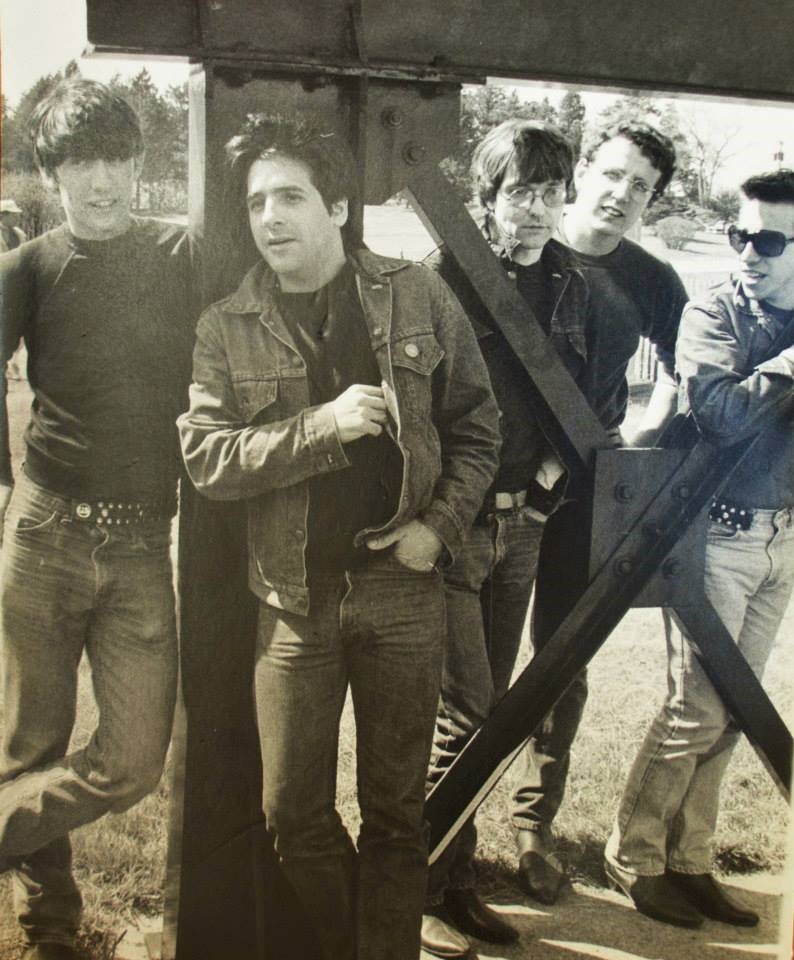
Looking back, what was the highlight of your time in the band? Which songs are you most proud of? Where and when was your most memorable gig?
Tony: Personally, I LOVED the early days. We were a fun band to see. We played TV theme songs, and let our drummer sing a song that usually turned the venue into a madhouse! Our fans knew that we usually ended with the DC5’s Bits & Pieces. As soon as they could tell that we were starting it, they were up on the stage dancing and slam dancing to it. It’s a wonder I still have my teeth! I’d have to say that opening for the Ramones the first time at Southampton College to over 2,000 people is still the highlight for me. However, playing the Felt Forum and winning BEST NEW ROCK BAND at the NY Music Awards was fairly awesome. Also playing LIVE on WNEW-FM on St Patrick’s Day at the Manhattan Brewery was a highlight, as well.
Steve: It was a good time. I got to play almost all of the major rock venues in Manhattan and go out on the road every now and then. When things were at their zenith, we felt like brothers and that we could do no wrong. I am very proud of being a part of it and it’s hard to pick one gig out of the bunch. An acoustic show we did at Folk City stands out. I met Jesse Dylan who was a roommate at the time with one of our fans. He had asked for a cassette of some of our songs and in turn gave me one of some of his father’s unreleased songs. I still have that cassette and some of the versions on it still have not been released!
Iain: Hard to point to one particular event. I think when we played places in Manhattan such as Irving Plaza and the Ritz it was an indication that we seemed to have a lot of momentum and we were getting an increasing following. I like all of the songs, but I think you’d have to ask Vance, Tony or Steve what songs they’re most proud of.
Mitch: I guess one of my favorite memories was playing the Ritz, China Club and Irving Plaza. Too many to list. Manhattan Brewery was also a major highlight.
Note from Blair: WNEW-FM was one of the biggest radio stations in New York City at the time.
Last word is yours.
Tony: Banana! No, seriously, BUY THE CDs!!!!!
Steve: It’s always good to know that no matter how we ended up, our music meant something to people. Thank you for taking the time to reach out.
Iain: I hope you enjoy the CD. We never made it to Europe, although the Cult asked us to open for them on a British tour. Sadly, we only had two weeks notice and I think I was the only one with a passport at the time.
Klemen Breznikar
The Mosquitos Bandcamp
Kool Kat Music Official Website / Instagram / Bandcamp
A Fractured Fairy Tale
“Once upon a time there was a boy named Vance, who had some original songs and had never played out live and was gonna sell all his equipment if he didn’t get a band. He got together in a band called Quisp, but they couldn’t play out cuz their guitar player had to go have a rumble. So he got together with Steve and Iain from The Fabians, did a few quick gigs and everybody liked it so we stayed together.” – Vance Brescia, WNYU radio interview, 1985
Tony explains, “We started Quisp in early summer, 1980 and went to early summer, 1981. It was our goal from the beginning to play live. We got the gig booked (a party) and then it got hammered.” Tony wasn’t quite ready to quit playing with Vance, but he needed a break.“I told him not to call me for a while. He called a week later.” And Tony said no.
“Vance knew me from [my job at] Sam Goody [where I worked with Tony],” said Iain. When Quisp broke up, Vance talked to Iain, telling him he had some songs – “sort of 60s influenced” – he wanted to play live at aOne Way Records party at Chelsea’s in Huntington. As Vance also knew Iain as bassist of The Fabians, he asked if he’d join up and get [Fabians’ guitarist] Steve to sign on.
Pat says the band probably first rehearsed in October of ’81. “I got back [from DC] in September and Vance asked me right around then. So we were rehearsing probably by [October].”
Tony doesn’t remember if he was at the first practice. In fact, had he signed on immediately, Iain might never have been asked…which might have meant no Steve, either. And an entirely different band.
The first couple gigs were the One Way Records parties, with 10 bands a night. Iain believes Vance always had long-term goals for the band, but when he and Steve signed on, they didn’t really have an actual band in mind. But “after the first gig,” they realized, “we really [had] something!” And so they decided to keep going. Pat agrees, “[While we were playing] I realized, “This sounds REALLY good!” And I think Tony heard it and thought he should’ve stayed with it.”
Tony’s role expanded quickly. Pat explains, “We’d go up and play, then he’d come up mid-set. We had a meeting (…) and all agreed that he was a full member, even though he wasn’t onstage full time. And he’d sing backing vocals and tambourine. When we added keys, [before he got the organ] it was my shitty keyboard and it had to sit on a fish tank stand.”
Soon, they were all dressing the same. Tony says that was Vance’s idea. “[He] got us all windbreakers and we’d wear different color sweatshirts.” Iain says, “[The Beatle boots went with] Vance’s whole Cavern/Merseybeat thing.”
In 1982, they did their first recording and released a cassette demo, sold for $3 at shows. Soon, the band was gigging constantly. Their first NYC show came at RT Firefly in October of that year.
In 1983, they recorded another song, which was coupled with two from the first cassette for another tape release.They played Southampton College opening for The Ramones. Pat: “[That] was a high point. We were all standing around and a guy with a headset on said, ‘Are you ready?’ And then the lights go down and everybody’s all excited. I’ll never forget that. Walking out on that stage and the place goes bananas. It was so much fun. It was crazy!”
And sometime in there, they got a manager, Scott Savitt. Nobody is sure exactly how that happened, but Iain says, “Probably that we were playing Chelsea’s and we were looking for another gig. I think Scott wasn’t working at Sparks at that point. He came to see us and liked us and offered to manage us.” Scott was a major presence on the local scene and worked hard for the band. To this day, fans remember calling “The Mosquito Hotline” and hearing Scotto’s big voice booming out of the answering machine in welcome, letting them know all the band’s upcoming shows.
Even early on, there were sometimes people that couldn’t get into Chelsea’s. And Sparks would always be packed. And soon they got to play CBGB’s, as well, a highlight for a few of them.
When Pat left, the band cast about looking for another drummer. At first, Pete Bross took the throne, but he ended up not being able to commit the time the band needed. Mitch picks up the story. “I was really tight with Vance and he used to drive me into the city on a Sunday night. One night, we were driving (…) and he asked me if I wanted to be in the band. I’d seen them a couple times and I loved the energy. This was what a band should be like. I thought they were great. I thought they were completely 100% exciting. They had really good vocals, too.” Note: The band rehearsed 3-4 times a week, one of which would be vocal-only.]
Vance’s songwriting had by this point veered away from Merseybeat and more towards pop/rock, albeit with a mid-60s influence. The band played a ton of shows with the NYC garage scene bands of the time, and “Darn Well” would be the inspiration for and the lead-off track of the ROIR “Garage Sale” cassette Jeff Tamarkin compiled for Goldmine in 1985.
The band was having fun. Iain says, “I listen to live recordings and we were a powerhouse.” They started doing some touring, mainly in the Northeast and Middle Atlantic regions, but they also made it to other regions of the country.
1984 was a whirlwind, with a summer that seemed to see them playing constantly, including a killer six-band bill at The Fuzzfest in NYC, with 5 other bands from the NYC scene. Of course, The Mosquitos didn’t get to see the other bands, as they’d already had a gig booked for Sparks that evening. So they finished there, packed up and drove in. A few weeks later was “WLIR Night at Irving Plaza with the Lyres & The Mosquitos.” [Iain: “15 years ago tonight, Man landed on The Moon…And we’re still playing with tube amplifiers.”]
They’d play tons of gigs in Manhattan. The Dive – home to NYC’s garage scene – was, of course, a favorite. But they’d also play The Lone Star, The Peppermint Lounge, The Ritz, and – perhaps most of all – Irving Plaza. In a WUSB interview, Scotto proudly proclaimed that the band “outdrew the headliners” when they’d play Irving. To the point that they eventually got to headline the large venue themselves. “And rightly so,” he said. “We earned it!”
By 1985, they’d kicked into overdrive. They released their EP and held a record release “carnival” at Irving Plaza, with games, contests, and prizes. (Yes, they also played a set). In recognition of the Folk City’s policy in days gone by, they performed an acoustic set there. (Note that this was over 5 years before bands were doing “unplugged” shows). They even radically rearranged ‘Darn Well’ for the occasion.
1986 was also looking great for the band. They were live on the radio on St. Patrick’s Day. Less than two weeks later, they were playing the New York Music Awards at the Felt Forum at Madison Square Garden, where they’d been nominated for 3-4 awards, and won Best New Rock Band. The great shows continued and the band also hit the road as Spring came along. About a month before summer – and about the time many of their friends had just come home from college – they started doing every Sunday night for a month at the club they’d played One Way Records parties at 4-5 years earlier. And then The Monkees had a hit with “That Was Then…”
But by late fall, Mitch was gone. Pete Bross, who’d stepped in when Pat left, again got the call. A fantastic Christmas show was held in Huntington. The new year beckoned.
The band attracted the interest of producer Steve Addabo, who was just finishing up with Suzanne Vega. He requested that they present some songs that they’d like to record and he’d pick a few from that batch. They did. And he did. And then came a band meeting about his picks. And that was it. “[The end] was very quick,” says Tony, “We went from a band about to record an LP to [broken up] in a week.”
You hold in your hands just about every original song the band ever played together. What you’ll hear is something a few of us rabid fans have known for years: Not only did this band write killer songs, but their musicianship, vocals and arrangements were something special.
The fairy tale may have fractured, but hopefully this recording will at least tape it together so you can enjoy the story.

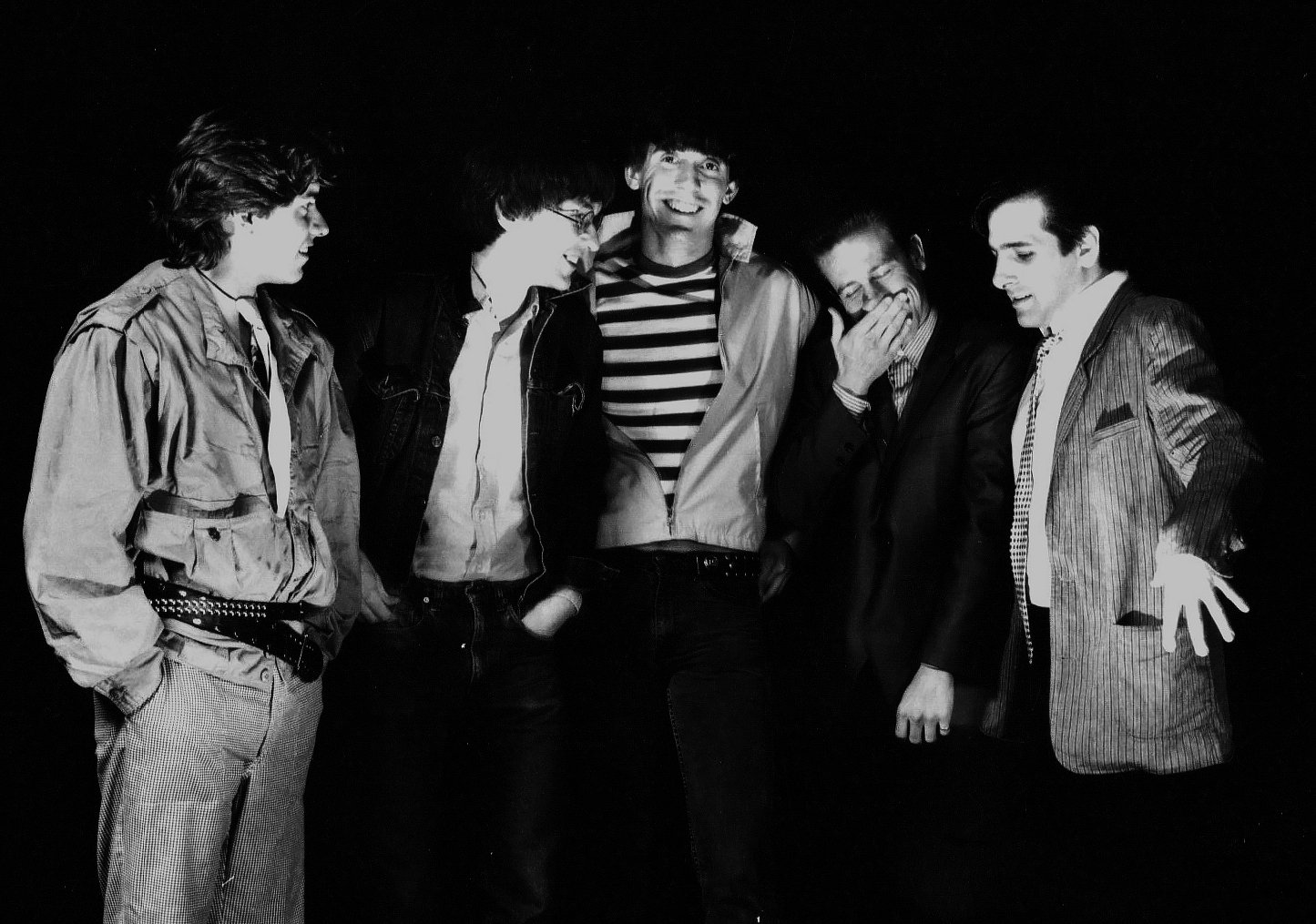
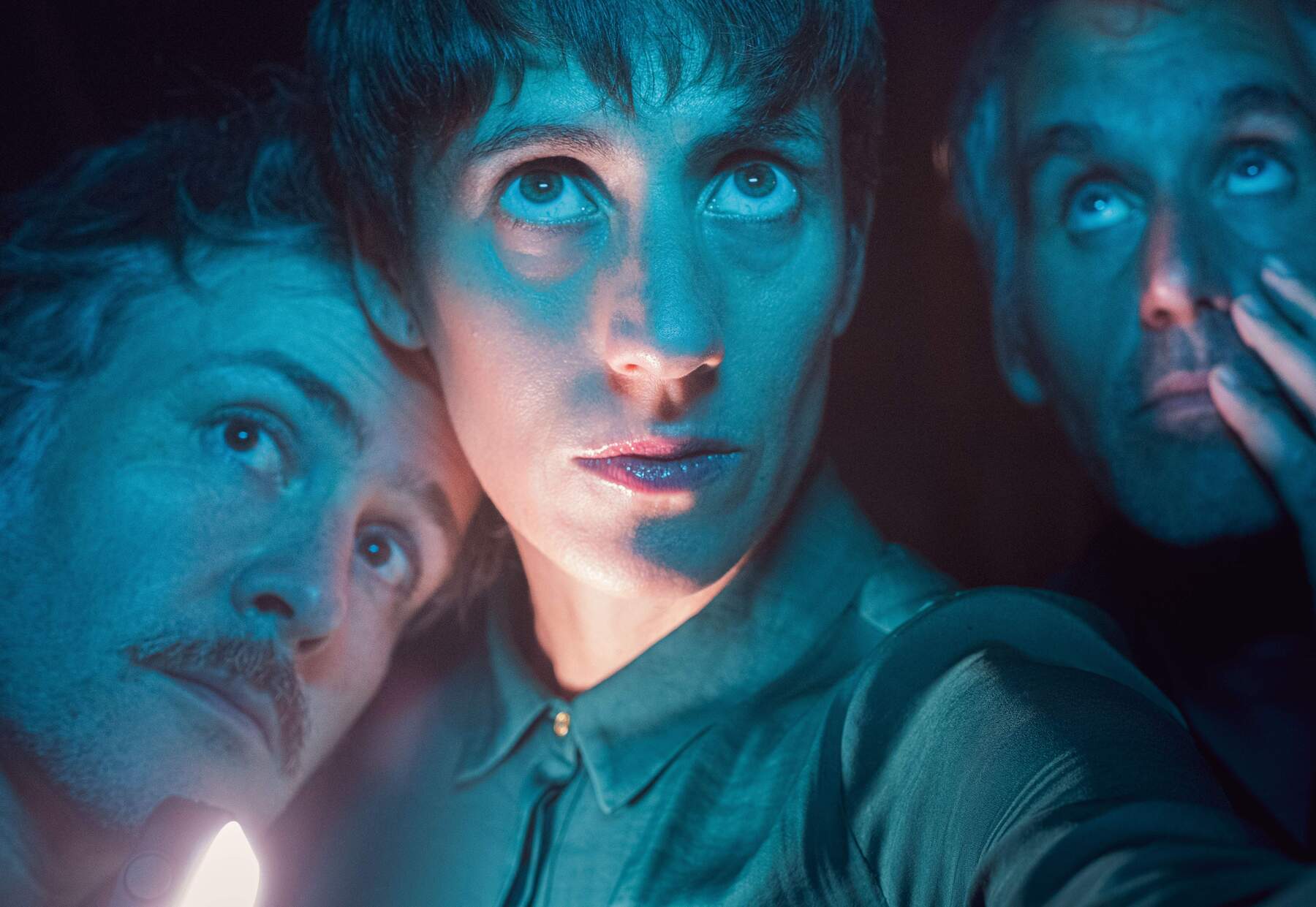
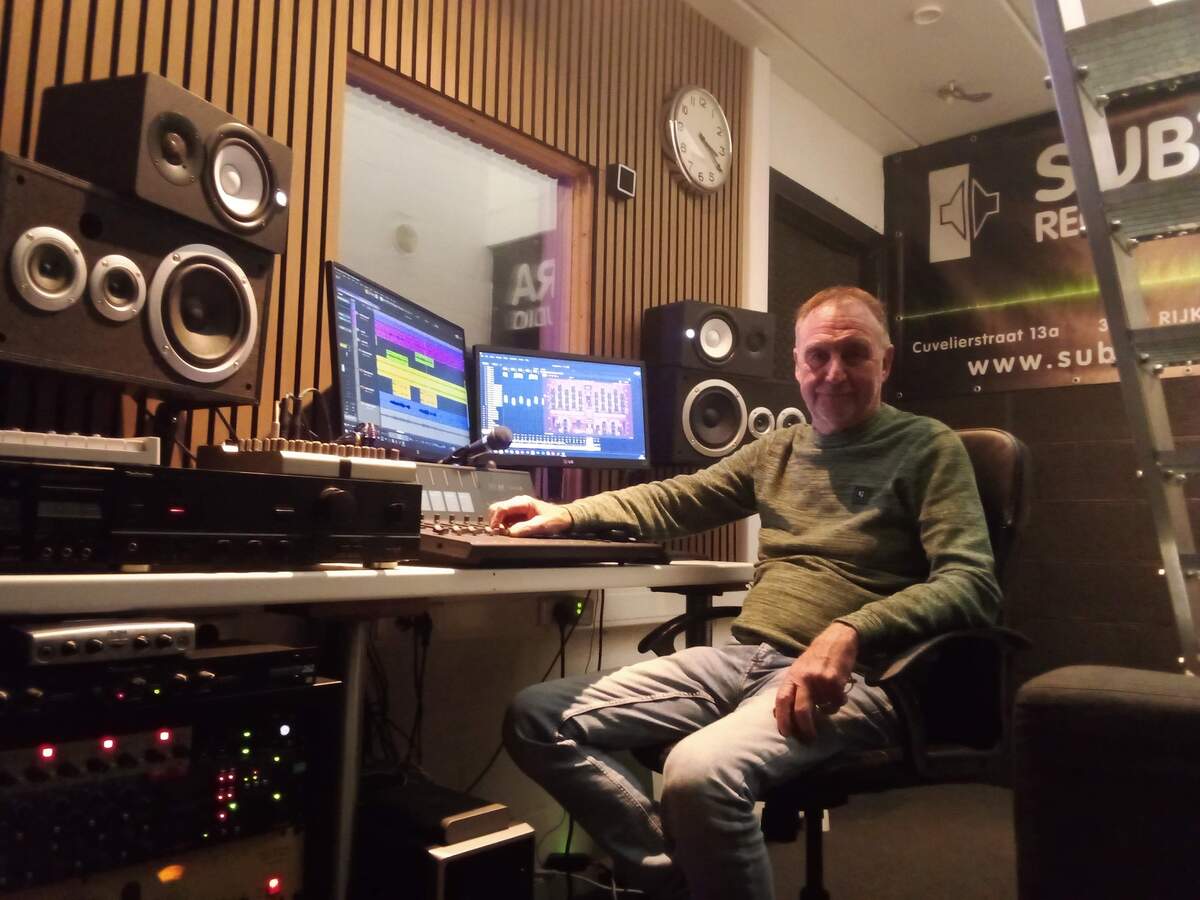
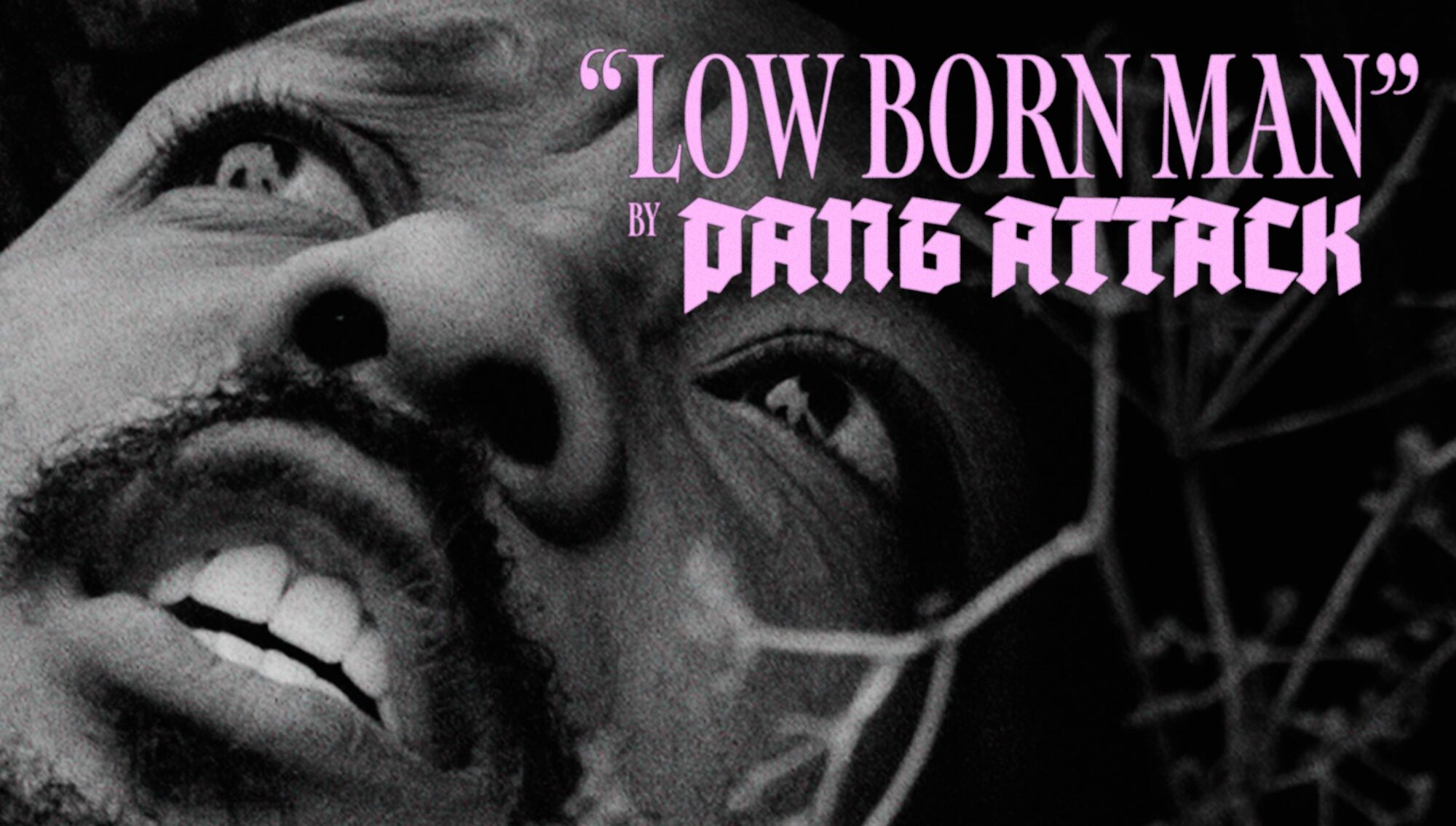
Thanks for the tip !